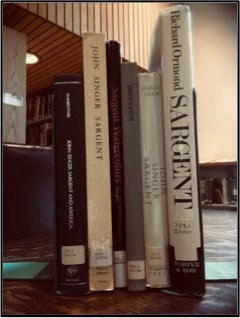A Little Library History
The idea of free public access to libraries in which patrons had the ability to browse open shelves and check out books was an obscure concept in America before the 1870s. Most libraries in existence before 1876 were referred to as private “social libraries,” which were solely subscription based and only open to a select elite class.Library historians have noted many factors that contributed to the rise and expansion of the public library movement after 1890 and the shift of these “social libraries” to true free public libraries. One important factor for this shift was the development of the library profession as a whole—with the assistance of a famous library figure, Melvil Dewey. Dewey’s pioneering ideas for libraries to run uniformly, with efficiency and cost-effectiveness, would bring about changes that would ultimately make the library more accessible to the average library patron.
Dewey’s Innovative Classification System
One of Dewey’s most famous contributions to libraries was his publication of the Dewey Decimal Classification system (DDC) in 1876. For the very first time, library catalogers were able organize (or classify) books together around a similar topic or subject using a standardized system, thus making it easier for patrons to look at all of the books a library had on a particular topic or subject. Without getting into the technical aspects of cataloging a book using the DDC system, it is helpful to understand that the system uses Arabic numerals within a structured hierarchy to represent subjects. For example, “700” is the numeric main class for “arts & recreation,” and “750” is the second class assigned for “painting.” The implementation of the DDC system in libraries across the world meant that a patron could walk into any library and browse the shelves in the 750 area to find books relating to art, and specifically, to painting. The implementations of this system not only made cataloging and finding books dramatically more efficient, it brought uniformity to the organization of libraries.Switching to the Library of Congress System
It is in the spirit of Dewey’s dedication to efficiency, uniformity, and accessibility that the WAM Library is undertaking its current reclassification and automation project. For numerous reasons, many academic libraries began reclassifying their books from the DDC system to the LCC system in the 1960s and 1970s. Although we are moving away from the DDC system, it is an appropriate and timely choice for us to adopt the Library of Congress (LCC) system. First, we are seeking uniformity with our academic library peers, both in close proximity and across the country. By 1996, only 25% of academic libraries were using the DDC, and most recently (2017), it was reported that only 19% of academic libraries are using the DDC. Second, we are seeking efficiency for both the processes of cataloging and retrieving books. Our patrons will no longer have to look in multiple locations for books on the same topic or subject, and we will no longer have to reclassify books on a case-by-case basis. Lastly, but most importantly, we are hoping to increase the accessibility of our library for all patrons. The Library of Congress system is more widely known, used, and understood. It is also constantly undergoing revisions and changes to make the system more inclusive and representative of all cultures, religions, and people.Bibliographic Barcoding
 |
| One of the very first books to receive a barcode! |
While we do miss seeing all of you in the library, we look forward to sharing all of these improvements with you when we re-open. We appreciate all of your patience and support as we work through this comprehensive project!
--Rebecca Morin, Head Librarian
April 1, 2019
References
Kevane, M., & Sundstrom, W. A. (2014). The development of public libraries in the United States, 1870-1930: A quantitative assessment. Information & Culture, 2, 117-144.
Lund, B., & Agbaji, D. (2018). Use of Dewey Decimal Classification by Academic Libraries in the United States. Cataloging & Classification Quarterly, 56(7), 653-661.
Shorten, J., Seikel, M., & Ahrberg, J.H. (2005). Why do you still use Dewey? Library Resources & Technical Services, 49(2), 123-136.
Worcester Art Museum (1912). Bulletin of the Worcester Art Museum, 2(4).

